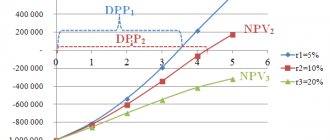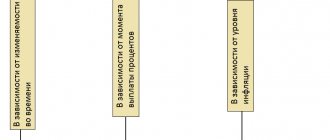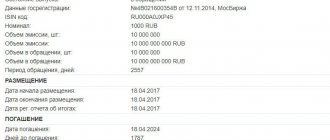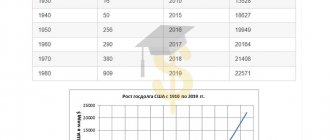The global one also affects Russia, because here too they issue loans under LIBOR and EURIBOR, enter into cross-border swaps on foreign rates and issue foreign currency bonds. The new European benchmark regulation, expected to come into force from 2022, prohibits European residents from dealing with benchmarks that do not comply with the new regulations. Requirements include having an indicator administrator, calculating rates on actual transactions, and many others. European legislation has extraterritorial influence.
Russia faced fewer problems, since domestic money market indicators by the time the global benchmark reform was launched in 2014 were already based on actual rather than indicative rates (Table 1). The new European regulation primarily affects MosPrime, which appears in cross-border interest rate swaps: like LIBOR, it is calculated based on bank surveys.
Main bets
In the Russian market, the main interbank market rates are those calculated by the Bank of Russia for a group of large banks conducting regular operations, as well as the rate on loans provided by a wide group of Moscow banks. If RUONIA represents the average temperature of the “core” of the interbank market, then MIACR is the average for the banking sector, taking into account its “periphery”.
These two rates are complemented by indicative rates that give an idea of the term structure of money market interest rates and are formed by the National Financial Association for eight major banks. The Moscow Exchange considers two more ruble indicators: and fixing REPOs with a central counterparty under clearing participation certificates - (Russian Secured Funding Average Rate).
And not the enemy, but so
With a floating rate it is more difficult. And they don’t give it to everyone. Most banks do not offer floating rates to individuals at all. Only for companies. But sometimes there are mortgage offers on the market at a non-fixed interest rate. Do you need to agree to such offers?
Vladimir Vereshchak, certified financial advisor, founder of the consulting company:
A floating loan rate sounds quite unusual for the Russian market. But in general there is nothing new in this concept. An analogy can be drawn: bonds with a floating coupon. These have already taken root in both the Russian and international markets a long time ago. Usually we are talking about long-term obligations, initially offered on more favorable terms than market ones. The point, as usual, is one – to sell and optimize. If we are talking about a loan with a floating rate, it will be slightly lower than the market rate. For bonds, the rate is correspondingly higher. However, since analysts of the lending bank or bond issuer have calculated that in the long term market conditions are highly likely to change in the bank’s favor (for example, loan rates will rise), the bank offering floating rate products wants to shift responsibility onto the shoulders of the client, reducing minimize your risks. Of course, bank analysts may be wrong, but...
Navigation
Personal tools
- You did not introduce yourself to the system
Namespaces
- Article
Options
Views
- Read
More
Search
Navigation
- Home page
- Categories
- Index A - Z
- Featured Articles
- Random article
- Current events
Participation
- Report a bug
- Community
- Forum
- Fresh edits
- New pages
- Reference
Tools
- Links here
- Related edits
- Special pages
- Permanent link
- Page details
- Wikidata element
- Quote page
- The text is available under a Creative Commons Attribution-ShareAlike license; In some cases, additional terms and conditions may apply. For more information, see Terms of Use. Wikipedia® is a registered trademark of the Wikimedia Foundation, Inc.
- For contact
- Privacy Policy
- Wikipedia Description
- Denial of responsibility
Where is she going?
The floating interest rate is not exactly floating around aimlessly in the pond of the financial market. It is quite tied to specific market indices. Typically in Russia, for issuing loans, the indices used are LIBOR (London Interbank Offered Rate, or London Interbank Offered Rate) for loans in euros/dollars and MosPrime (MosPrime Rate - Moscow Prime Offered Rate) for ruble loans. The bank adds its “margin” (+2/3/7 percent) to the indicator of this index and issues loans at this percentage.
LIBOR – London Interbank Offered Rate, or London Interbank Offered Rate
How it works?
MosPrime is an independent indicative rate for providing ruble loans (deposits). If we translate from the language of financiers into Russian, then - there is a National Monetary Association, which every day finds out from the country's leading banks at what percentage they give loans to their best clients (other banks and financial organizations). After this, the company calculates the arithmetic average. For example, today small banks can get a loan from large banks for six months at an average of 7.35% per annum.
In January of this year, the rate was 8.7% per annum and has been steadily decreasing since then.
A variable rate loan typically consists of two parts. The first is this same MosPrime rate, and the second is the fixed markup of your bank. For example, if your bank usually adds +2% per annum to the MosPrime rate, then in January you would pay it 8.7 + 2 = 10.7% per annum on the loan, and in September the rate would drop to 7.35 + 2 = 9 .35%.
But things can also go the other way around. And then your rate will not begin to decrease, but to increase.
Important requirements for indicators
When developing forecast and planning documentation, specialists, of course, use not a single indicator, but a whole complex, which are complementary and interrelated. When forming such a system, it is necessary to present a number of requirements to indicative indicators (in health care, education, social, economic development, etc.):
- The indicator must reveal the essence and content of the object.
- To comprehensively reflect the features of an object from the standpoint of both its material and cost status.
- Comply with the objectives and goals of economic and social development.
- Focus on more efficient and complete use of resources, improving the quality of work, etc.
- Have both methodological unity and comparability with statistics and accounting indicators.
- Possess the ability to aggregate and disaggregate.
- Be flexible and adaptive.
Does she change every day?
The index itself really changes every day, but no one will recalculate your loan interest every day. Typically, the agreement specifies a certain interval for changing the interest rate. For mortgage lending, this is usually six months, but there are options for 3 or 12 months.
Ivan Vasiliev, deputy head of the crowdfinance platform Penenza.ru:
Banks need a floating rate to maintain the margin level at the moment when MosPrime goes up. For example, a bank issued a loan at 11%, while the cost of funding was 7% and the margin was 4%. If market rates rise sharply, say, by 5%, then this loan will no longer be profitable for the bank, because funding no longer costs 7%, but 12%. That is, this is an opportunity to insure yourself against sharp fluctuations in market rates. Linking to an index is for those borrowers who believe that everything will be fine and rates will decrease, and in the future the rate on their loan will decrease. Now let’s remember the foreign currency mortgage and how it all ended for both citizens and banks. Therefore, if rates decline in the market, it is better to take advantage of a rate reduction in the current bank or refinancing in others.
ON APPROVAL OF INDICATORY INDICATORS
In order to increase the efficiency and productivity of labor of heads of subordinate institutions, in pursuance of the Action Plan for income growth, optimization and improvement of the efficiency of budget expenditures of the Ministry and on the basis of orders of the Government of the Chelyabinsk region dated November 10, 2016 N 634-rp “On the reorganization of the regional state government institution “Center” civil defense and protection of the population of the Chelyabinsk region”, dated November 18, 2016 N 647-rp “On the transfer to the Ministry of Public Security of the Chelyabinsk Region of the functions and powers of the founder”
I ORDER:
1. Approve the attached indicative indicators for assessing the performance of heads of subordinate institutions.
2. Approve the attached indicative indicators for assessing the activities of subordinate institutions.
3. When submitting orders for monthly, quarterly, and annual bonuses, the heads of subordinate institutions must attach a calculation of indicative performance indicators of the institutions.
4. The heads of the structural divisions of the Ministry responsible for monitoring indicative indicators must ensure the accuracy of calculations of indicative indicators of institutions’ performance.
5. Recognize as invalid the orders of the Ministry dated 02/12/2014 N 81 “On approval of indicative indicators”, dated 03/04/2015 N 130 “On amendments to the order dated 02/12/2014 N 81” and dated 06/17/2015 N 359 “On amendments” in order dated February 12, 2014 N 81.”
6. I reserve control over the execution of this order.
Minister of Ecology of the Chelyabinsk Region I.A. GLADKOVA
What's the benefit?
A floating interest rate may seem more profitable to you, because it is usually lower than a fixed one. For example, a bank will offer you a mortgage at either a fixed 11% per annum or a floating 8%. In addition, you may find yourself in a period of falling rates, as is happening, for example, now, in September 2021. But don't forget the risks involved. After all, the fall cannot continue forever.
Movement of the MosPrime index over the past 12 years:
As you can see, during moments of crisis (2008 and 2015), the index skyrocketed. And no one will give you guarantees that this will not happen again in the foreseeable future.
However, some banks have a condition in their contracts that even if the index soars, they will not raise the interest rate for their clients above a certain level. After all, bankruptcy and mass outflow of clients are not profitable for them. So read the terms of the contract carefully.
What is RUONIA used for?
OK then. We understood what RUONIA is. This is the rate at which banks lend to each other in order to speculate on Western stock markets at night to remove excess liquidity.
But why should an investor know the meaning of RUONIA of the Central Bank of the Russian Federation and how to use this knowledge in our everyday investor life? For example, to determine the normal dividend yield on shares. If the dividend yield is higher than the RUONIA rate, then this stock is not only profitable, but also has increased risks. If it is lower, it means that the stock is not so profitable, you need to look for more profitable options.
But, naturally, you need to compare the yield with RUONIA wisely. If a company traditionally pays low dividends but is stable, then it can be included in your portfolio. If the dividends are each time significantly higher than the market, but the stock itself does not tend to “catch up” to the “price minus dividends” quote, then something is wrong here. For some reason, investors don't want to buy it. We need to analyze the stock more closely.
In addition, RUONIA is directly related to the key rate of the Central Bank of the Russian Federation. Let me remind you that the key rate is used by the Central Bank to regulate the level of inflation (in fact, there are many purposes - but this is the most basic). And this is also the rate at which the Central Bank lends to commercial banks, providing them with liquidity.
If RUONIA is below the key rate, then the largest banks have additional money in reserve. If RUONIA is higher, then there is not enough money. How to use it - think for yourself.
Is it possible to predict rate changes?
If you are not a professional financier - hardly. Yes, even if professional, it is still unlikely that you will feel the approaching crisis long before everyone else and will have time to close the loan ahead of schedule. In addition, it is unlikely that you even have reserves of money that would allow you to abruptly close all your loans before a crisis (if you have such reserves, why do you need loans at all?).
The MosPrime index depends on many factors. Here are the rates of the Central Bank, and politics, and the economic state of the country, and the forecasts of leading financiers, and even some major accidents/cataclysms. It is difficult to analyze all this and predict the development of events.
Types of planning
Indicative planning is represented by two categories:
- Macroeconomic level. This involves drawing up plans for economic development at the highest levels - federal and regional. This also includes the levels of interregional and intersectoral corporations.
- Microeconomic level. This category includes the preparation of economic plans for individual organizations and enterprises.
There is also a breeding by timing:
- Medium-term indicative plans. Compiled for 1-5 years.
- Long-term indicative plans. They are drawn up for a period of 5 to 10, and sometimes up to 15 years.
Pros and cons of a floating rate:
[wp-svg-icons icon=”plus” wrap=”i”] when you lower your rate, you can save a lot;
[wp-svg-icons icon=”plus” wrap=”i”] and in general, loans at a floating rate are cheaper than fixed ones;
[wp-svg-icons icon=”plus” wrap=”i”] banks are more willing to give approval for a mortgage with a floating rate, because the bank’s risk in this case is minimal;
[wp-svg-icons icon=”minus” wrap=”i”] interest may suddenly and dramatically increase;
[wp-svg-icons icon=”minus” wrap=”i”] planning expenses for a long time in advance is simply impossible;
[wp-svg-icons icon=”minus” wrap=”i”] the bank is very reluctant to change the terms of floating rate loans.
[wp-svg-icons icon=”minus” wrap=”i”] When trying to refinance or urgent full/partial repayment, you can run into large fines (you should read about this in your contract in advance).
All these factors lead to the fact that fixed-rate loans are very popular in Russia. People are willing to overpay for the absence of risks and the guarantee that the monthly payment will not change, rather than saving on interest and risking being left without money.
Anastasia Mukhacheva, risk director of the installment card “Conscience”:
Why is a floating rate needed? The moment an individual/legal entity becomes a bank client (takes out a loan or deposits money), he or she faces many market and operational risks. One of the most important market risks is the risk of changes in interest rates. Essentially, a rate is the time value of money. Thus, market interest rate risk is the risk that money in the market will cost more or less than the client's funds. Floating interest rates allow banks and clients to protect themselves from changes in the value of money over time and from adverse events associated with changes in indices. A floating rate is a strong tool that allows you to reduce the risks taken by agents, as well as to receive income above the market one if the right decision is made and favorable market conditions. In calm times or times of economic recovery, this instrument can be beneficial for the borrower, since the rate gradually decreases and there is no need to look for sources of loan refinancing. In Russia, this instrument occupies a small share of the lending/deposit market. The main reason is that it is a complex financial instrument both for banks - in terms of launching, maintaining, and for people - in terms of understanding and using. In my opinion, at the moment, the financial culture in our country is still at a level where loans with similar rates remain not a mass product, but an exclusive product.
Definition of the term
The term RUONIA (also spelled Ruonia or RUONIA) is a Russified abbreviation RUONIA. The abbreviation itself comes from the abbreviation Ruble OverNight Index Average - an indicative weighted rate of one-day ruble loans issued on overnight terms on the interbank market.
In simple terms, RUONIA is the average rate at which banks issue loans to each other or take deposits overnight, i.e. overnight (from English overnight - “overnight”).
The credit risk of such borrowings is minimal, since the funds are placed in reliable banks and for an ultra-short term. The overnight debt is repaid on the next business day. An overnight deposit allows the bank to place excess liquidity, and a loan allows it to attract funds if, according to the forecasts of the analytical department, tomorrow there may not be enough money to pay clients.
Ruonia's rate is sometimes called the cost of money, since it actually shows how money increases in value over time. Therefore, together with the key rate and the rate of inflation, the RUONIA rate is decisive in the economy. And investors need to know it.
By the way, you can make money on overnight trading. How exactly - in the article about overnight VTB bonds.
Conclusion:
Russians do not yet feel sufficiently confident in the future to risk much interest on loans. Two crises in a row, 2008 and 2014, have turned even the strongest financial optimists into cautious paranoids, and a twelve-month drop in rates is not a sufficient argument for switching to a risky lending system. Therefore, for now we can say for sure that a floating rate is good for not very long-term loans up to five years inclusive. In this case, you can get into a downward trend and save, or at least not overpay, even if the interest slowly creeps up (after all, your rate will still be initially lower than the fixed one). But for all other cases, we would not recommend taking risks.
The author of this article will be grateful if you like our Facebook group.
Did you like the article? Rate it and tell your friends
Indicative assessment of price tax risks in uncontrolled transactions
A large number of publications are devoted to the issues of transfer price control according to the rules of Chapter 14.1 of the Tax Code of the Russian Federation. However, transactions between related parties that are not formally subject to control under the rules of Chapter 14.1 of the Tax Code of the Russian Federation may also pose tax risks.
This article, based on an analysis of judicial practice, provides examples of such cases. In particular, the grounds used in the courts for assessing prices for transactions are taken into account if the tax authority has grounds to believe that the benefit declared by the taxpayer is unfounded (taking into account the provisions of the Resolution of the Plenum of the Supreme Arbitration Court of the Russian Federation No. 53 of October 12, 2006), as well as the need to apply the provisions on price control in cases where this is required by virtue of the direct provisions of Part 2 of the Tax Code of the Russian Federation.
In an accountant’s practice, it is also important to have a tool for quickly assessing the presence or absence of such risks for each transaction. It is quite difficult for accountants to identify transactions with non-market prices, since a large number of contracts are submitted for approval, and conducting a full price analysis for each of them simply paralyzes the work of the accounting department.
Especially for you, we have prepared a step-by-step algorithm of actions that will help accountants quickly identify price risks at the stage of agreeing on contracts.
Scheme 1. Accounting procedure for identifying price tax risks for uncontrolled transactions between related parties
How to determine the level of materiality?
When deciding to prepare an individual price justification, it is also possible to take into account the level of materiality of potential tax liabilities, which must be determined for each company separately.
Examples of risk assessment for uncontrolled transactions with related parties (Table 1)
| Transaction type | What is the risk? | Procedure for indicative price check |
| The company receives goods/works/services free of charge and, thus, reflects income for income tax purposes (However, price controls are not applicable if the income is exempt from income tax in accordance with Article 251 of the Tax Code of the Russian Federation) | In accordance with paragraph 2 of Art. 154, paragraph 8 of Art. 250 of the Tax Code of the Russian Federation, when receiving goods/work/services free of charge, the company is obliged to determine the tax base for income tax and VAT, taking into account the market price level. This approach was set out by the Presidium of the Supreme Court in the review of judicial practice dated February 16, 2017 No. 1 (2017). | (1) Request from the counterparty data on the cost of production/residual value of goods, works, services/fixed assets received; (2) Compare the price in the transaction with prices for similar goods from publicly available sources (see Table 2 below); (3) Document the procedure for determining the price in the form of an accounting statement. |
| Any compensated transactions, the price of which is obviously significantly higher/lower compared to normal business turnover | A multiple (2 or more times) deviation of the price in a transaction from the market level may indicate the presence of an unjustified tax benefit. This approach was set out by the Presidium of the Supreme Court in the review of judicial practice dated February 16, 2017 No. 1 (2017). | Risk reduction is possible by preparing a justification for the price of a transaction, including using methods for checking the compliance of prices with market levels used for controlled transactions. |
| Property rental | The rent amount is often used as a tool for redistributing profits between Group companies. Inspectors indicate the absence of a business purpose in a transaction if the lease amount does not cover the amount of depreciation on the specified property, which may indicate the presence of an unjustified tax benefit (see, for example, Resolution of the Federal Arbitration Court of the Moscow District No. KA-A40/2613-11 dated 04/06/2011, Resolution of the Arbitration Court of the Central District No. A54-4631/2014 dated 05/06/2016) | (1) Request information from the dependent lessor about the amount of depreciation deductions, the cost of utility bills (if they are paid by the lessor), tax deductions for the specified property and compare the price in the transaction with the specified value; (2) Compare the rental price with the average cost of m2 of similar premises according to advertisement sites (for buildings). |
| Intra-group management services (accounting, legal services, sole executive officer services, marketing services) | The absence of an economically justified calculation of the cost of services is an independent basis for challenging the tax consequences of a transaction (see, for example, Resolution of the Arbitration Court of the North Caucasus District No. F08-1159/2016 dated March 18, 2016). | (1) Make sure that the contract provides for a clear and economically sound calculation of the cost of these services, based on objective indicators, and such a calculation is actually made; (2) If the cost of intragroup services is not calculated based on actual costs (man-hour cost, direct and indirect costs), an individual price justification must be prepared. |
| Transport services | Costs for transportation services are also the object of close attention of Inspectors as part of filing claims against companies for transactions with unscrupulous suppliers. | (1) Request from the interdependent service provider agreements for the rental of vehicles / the amount of depreciation charges for vehicles; (2) Calculate the cost of transporting similar cargo based on data from on-line transportation cost calculators (for example, depending on the type of cargo): (3) Request commercial proposals from transport companies for the transportation of similar goods. |
| Intragroup loans | If a company took out a loan from a bank and then issued a loan to an interdependent person at a reduced rate, Inspectors may point out the lack of economic justification for the company’s interest expenses and challenge their accounting for income tax purposes (see, for example, Resolution of the Arbitration Court of the North Caucasus District No. F08-1118/2015 dated 04/01/2015). | (1) Make sure that the rate on the loan issued to the related company is not lower than the rate on the loan from the bank; (2) Make sure that the rate on the loan issued to the related company corresponds to the market level determined in accordance with clause 1.1. Art. 269 of the Tax Code of the Russian Federation[1]. |
| Sale of shares in the authorized capital of a company to related parties Check whether the exemption from taxation of income from the sale of shares, established by Art. 284.2, 284.2.1 Tax Code of the Russian Federation | The sale of shares in the authorized capital of an organization at a cost significantly lower than the market value (for example, the sale of a stable, profitable company at a par value of 10 thousand rubles), in the opinion of the Inspectors, may indicate a lack of income by the seller under the transaction (see, for example, the Resolution of the Federal Arbitration Court of the North-Western District No. A56-41004/2013 dated 06/27/2014, Resolution of the Arbitration Court of the North-Western District No. A13-5850/2014 dated 03/15/2016). | Compare the price in the transaction with the value of the corresponding share of the net assets of the company whose shares in the authorized capital are being sold. If there is a significant deviation in the transaction price, it is necessary to prepare an appraiser's report. However, even with an appraiser's report, an extremely low transaction value means that the transaction is at risk. |
| Distribution of property to the parent company upon liquidation of a subsidiary Check whether the exemption from taxation of income upon liquidation, established by clause 2.2 of Art. 277 Tax Code of the Russian Federation | In accordance with paragraph 2 of Art. 277, para. 5 p. 2 art. 39 of the Tax Code of the Russian Federation, property received by a company as a result of the liquidation of a subsidiary in excess of the initial contribution to the authorized capital is subject to income tax and VAT based on market prices. | (1) Compare the value of the transferred objects with the prices of similar objects from publicly available sources (see Table 2 below); (2) Request an appraiser’s report from the counterparty (if available). In the absence of an appraiser's report, the transaction is at risk. |
| Purchase/sale of goods through an interdependent intermediary (resale/commission/agency) | The purchase/sale of goods through an intermediary is the subject of close attention of tax authorities and can lead to additional charges if the inclusion of an intermediary in the procurement chain is unjustified (see, for example, Resolution of the Arbitration Court of the North Caucasus District No. F08-6208/2016 dated 09/21/2016, Determination of the Supreme Court No. 305-KG16-622 dated 03/02/2016). An unreasonable deviation from the market level in the amount of the agent's/commission agent's remuneration or the price of the goods (in case of resale) can be interpreted as an additional argument in favor of the existence of an unjustified tax benefit. | Make sure that the agent/commission agent's remuneration level does not exceed a reasonable limit (for example, 10%[2]). To do this, you need to request information about the cost of purchase/sale of goods by an intermediary and make sure that the price of purchase/sale of goods through an intermediary does not significantly deviate from the prices of purchase/sale of goods by the company from non-related parties. |
| Transactions with persons using special regimes, individuals who do not have individual entrepreneur status | Price manipulation in transactions where the parties are taxpayers who do not pay income tax/VAT is a classic example when underpricing leads to intra-group tax savings (see, for example, Determination of the Judicial Collegium for Economic Disputes of the Supreme Court of the Russian Federation, No. 305- KG16-4920 dated July 22, 2016). If the buyer is a person using the special regime, it is “profitable” for the seller to lower the price, since the buyer is not a VAT and income tax payer. Conversely, if the seller is a person using the special regime, it is “profitable” for the buyer to inflate the price in order to increase income tax expenses, since he taxes his income at a rate of 20%, unlike the buyer. | (1) Make sure that the price in the transaction does not deviate significantly from the prices for similar transactions with non-related parties; (2) Compare the price in the transaction with prices for similar products from publicly available sources (see Table 2 below). An example of an indicative comparison of prices with market levels (Table 2) |
| Commodities, as well as products of their processing (oil, coal, metals, rolled metal, etc.) | Data from the websites of exchanges, pricing agencies (Platts, Argus, CORTES, Metall Bulletin, etc.), as well as information on taxpayer transactions with independent persons in comparable conditions | |
| Other goods and equipment | Notice boards; Data from government procurement websites; Trading platforms (auctions); Information on the sale of property as part of bankruptcy auctions; and information on transactions of the taxpayer with independent persons in comparable conditions | |
| Real estate | Appraiser's report (if available), cadastral value | |
| Intermediary profitability | No more than 10% or data from the SPARK database (calculation of the market profitability interval according to the OKVED code) |
[1] The Tax Code of the Russian Federation does not provide for mandatory compliance of the amount of interest expenses on transactions that are not recognized as controllable with the limit values specified in Art. 269 of the Tax Code of the Russian Federation, however, the indicated values can be used for indicative purposes.
[2] The indicated value is indicative and may differ depending on the industry











